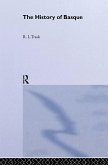Yicheng Wu
The Interfaces of Chinese Syntax with Semantics and Pragmatics
Yicheng Wu
The Interfaces of Chinese Syntax with Semantics and Pragmatics
- Gebundenes Buch
- Merkliste
- Auf die Merkliste
- Bewerten Bewerten
- Teilen
- Produkt teilen
- Produkterinnerung
- Produkterinnerung
The Interfaces of Chinese Syntax with Semantics and Pragmatics provides an in-depth exploration of a variety of interface phenomena in Chinese, a non-inflectional language, where to a large extent word order constrains its interpretation and defines its grammatical functions. Under the Dynamic Syntax approach, which takes the incremental left-to-right processing of linguistic forms to be a fundamental part of characterizing the relation between syntactic structure and semantic interpretation, a straightforward explanation is provided. The study features detailed analysis of a range of key…mehr
Andere Kunden interessierten sich auch für
![Historical Linguistics Historical Linguistics]() Winfred P. LehmannHistorical Linguistics230,99 €
Winfred P. LehmannHistorical Linguistics230,99 €![Trask's Historical Linguistics Trask's Historical Linguistics]() Robert McColl MillarTrask's Historical Linguistics174,99 €
Robert McColl MillarTrask's Historical Linguistics174,99 €![Intermediate Persian Intermediate Persian]() Saeed YousefIntermediate Persian180,99 €
Saeed YousefIntermediate Persian180,99 €![Danish Danish]() Tom Lundskaer-NielsenDanish192,99 €
Tom Lundskaer-NielsenDanish192,99 €![English English]() Gerald NelsonEnglish180,99 €
Gerald NelsonEnglish180,99 €![Danish Danish]() Tom Lundskaer-NielsenDanish200,99 €
Tom Lundskaer-NielsenDanish200,99 €![The History of Basque The History of Basque]() R. L. TraskThe History of Basque280,99 €
R. L. TraskThe History of Basque280,99 €-
-
-
The Interfaces of Chinese Syntax with Semantics and Pragmatics provides an in-depth exploration of a variety of interface phenomena in Chinese, a non-inflectional language, where to a large extent word order constrains its interpretation and defines its grammatical functions. Under the Dynamic Syntax approach, which takes the incremental left-to-right processing of linguistic forms to be a fundamental part of characterizing the relation between syntactic structure and semantic interpretation, a straightforward explanation is provided. The study features detailed analysis of a range of key grammatical constructions such as topic, passive, copular and cleft, where previous analyses were sought in pure syntactic, semantic or pragmatic terms.
Produktdetails
- Produktdetails
- Verlag: Routledge
- Seitenzahl: 232
- Erscheinungstermin: 20. Februar 2017
- Englisch
- Abmessung: 235mm x 157mm x 17mm
- Gewicht: 493g
- ISBN-13: 9781138241329
- ISBN-10: 1138241326
- Artikelnr.: 47703174
- Herstellerkennzeichnung
- Libri GmbH
- Europaallee 1
- 36244 Bad Hersfeld
- gpsr@libri.de
- Verlag: Routledge
- Seitenzahl: 232
- Erscheinungstermin: 20. Februar 2017
- Englisch
- Abmessung: 235mm x 157mm x 17mm
- Gewicht: 493g
- ISBN-13: 9781138241329
- ISBN-10: 1138241326
- Artikelnr.: 47703174
- Herstellerkennzeichnung
- Libri GmbH
- Europaallee 1
- 36244 Bad Hersfeld
- gpsr@libri.de
Yicheng Wu is Professor of Linguistics at the Centre for the Study of Language and Cognition, Zhejiang University, P. R. China.
Acknowledgements
Introduction
1 Chinese Syntax: A General Description
1 Introduction
2 Word order flexibility
3 Semantics in syntax
4 Pragmatics in syntax
5 Overview of the book
2 The Dynamics of Language Processing
1 A preliminary introduction
1.1 Compositionality and context-dependency
1.2 Interpretation and representation
1.3 Underspecification and resolution
2 The tools of Dynamic Syntax
2.1 Tree logic and treenode decorations
2.2 Requirements and tree growth
3 The dynamics of the parsing process *
3.1 Computational rules
3.2 Lexical actions
3.3 A basic example
3.4 Pragmatic actions
4 Simple clause structure in Chinese
5 Summary
3 The Dynamics of Verbal Underspecification in Chinese
1 Introduction
2 Previous analyses
3 A dynamic analysis
4 Summary
4 Topic Constructions
1 Introduction
2 Previous analyses
2.1 The variable analysis
2.2 The pragmatic analysis
3 A preliminary analysis
3.1 Single topic structure
3.2 Multiple topic structure
4 A dynamic analysis
4.1 English-style topic construction
4.2 Chinese-style topic construction
5 Summary
5 Passive Constructions
1 Introduction
2 Previous analyses
2.1 The Preposition Hypothesis
2.2 The Dual Function Hypothesis
2.3 The Verb Hypothesis
3 A preliminary analysis
3.1 Pragmatic voice
3.2 Left dislocation
3.3 The characterization of the canonical patterns
4 Problematic patterns
4.1 Bei construction with a retained object (BCRO)
4.2 Bei construction with an embedded ba construction (BCBC)
4.3 Bei construction with a locative patient (BCLP)
5 Summary
6 Copular Constructions
1 Introduction
2 Previous analyses
3 A preliminary analysis
4 A dynamic analysis
4.1 Predicative construction
4.2 Emphatic construction
5 Summary
7 The Cleft Construction
1 Introduction
2 Previous analyses
3 A dynamic analysis
4 Summary
8 Semantic Underspecification: Cases of Personal Pronouns
1 Introduction
2 Previous analysis of expletive ta
3 A dynamic analysis
3.1. A dynamic analysis of the typical and non-typical referential
construal of ta
3.2 A dynamic analysis of the expletive construal of ta
3.3 Scope interpretation and expletive ta
3.4 Some implications
4 Summary
9 Conclusion
1 Contributions to Chinese linguistics
2 Reflections on linguistic theorizing
References
Introduction
1 Chinese Syntax: A General Description
1 Introduction
2 Word order flexibility
3 Semantics in syntax
4 Pragmatics in syntax
5 Overview of the book
2 The Dynamics of Language Processing
1 A preliminary introduction
1.1 Compositionality and context-dependency
1.2 Interpretation and representation
1.3 Underspecification and resolution
2 The tools of Dynamic Syntax
2.1 Tree logic and treenode decorations
2.2 Requirements and tree growth
3 The dynamics of the parsing process *
3.1 Computational rules
3.2 Lexical actions
3.3 A basic example
3.4 Pragmatic actions
4 Simple clause structure in Chinese
5 Summary
3 The Dynamics of Verbal Underspecification in Chinese
1 Introduction
2 Previous analyses
3 A dynamic analysis
4 Summary
4 Topic Constructions
1 Introduction
2 Previous analyses
2.1 The variable analysis
2.2 The pragmatic analysis
3 A preliminary analysis
3.1 Single topic structure
3.2 Multiple topic structure
4 A dynamic analysis
4.1 English-style topic construction
4.2 Chinese-style topic construction
5 Summary
5 Passive Constructions
1 Introduction
2 Previous analyses
2.1 The Preposition Hypothesis
2.2 The Dual Function Hypothesis
2.3 The Verb Hypothesis
3 A preliminary analysis
3.1 Pragmatic voice
3.2 Left dislocation
3.3 The characterization of the canonical patterns
4 Problematic patterns
4.1 Bei construction with a retained object (BCRO)
4.2 Bei construction with an embedded ba construction (BCBC)
4.3 Bei construction with a locative patient (BCLP)
5 Summary
6 Copular Constructions
1 Introduction
2 Previous analyses
3 A preliminary analysis
4 A dynamic analysis
4.1 Predicative construction
4.2 Emphatic construction
5 Summary
7 The Cleft Construction
1 Introduction
2 Previous analyses
3 A dynamic analysis
4 Summary
8 Semantic Underspecification: Cases of Personal Pronouns
1 Introduction
2 Previous analysis of expletive ta
3 A dynamic analysis
3.1. A dynamic analysis of the typical and non-typical referential
construal of ta
3.2 A dynamic analysis of the expletive construal of ta
3.3 Scope interpretation and expletive ta
3.4 Some implications
4 Summary
9 Conclusion
1 Contributions to Chinese linguistics
2 Reflections on linguistic theorizing
References
Acknowledgements
Introduction
1 Chinese Syntax: A General Description
1 Introduction
2 Word order flexibility
3 Semantics in syntax
4 Pragmatics in syntax
5 Overview of the book
2 The Dynamics of Language Processing
1 A preliminary introduction
1.1 Compositionality and context-dependency
1.2 Interpretation and representation
1.3 Underspecification and resolution
2 The tools of Dynamic Syntax
2.1 Tree logic and treenode decorations
2.2 Requirements and tree growth
3 The dynamics of the parsing process *
3.1 Computational rules
3.2 Lexical actions
3.3 A basic example
3.4 Pragmatic actions
4 Simple clause structure in Chinese
5 Summary
3 The Dynamics of Verbal Underspecification in Chinese
1 Introduction
2 Previous analyses
3 A dynamic analysis
4 Summary
4 Topic Constructions
1 Introduction
2 Previous analyses
2.1 The variable analysis
2.2 The pragmatic analysis
3 A preliminary analysis
3.1 Single topic structure
3.2 Multiple topic structure
4 A dynamic analysis
4.1 English-style topic construction
4.2 Chinese-style topic construction
5 Summary
5 Passive Constructions
1 Introduction
2 Previous analyses
2.1 The Preposition Hypothesis
2.2 The Dual Function Hypothesis
2.3 The Verb Hypothesis
3 A preliminary analysis
3.1 Pragmatic voice
3.2 Left dislocation
3.3 The characterization of the canonical patterns
4 Problematic patterns
4.1 Bei construction with a retained object (BCRO)
4.2 Bei construction with an embedded ba construction (BCBC)
4.3 Bei construction with a locative patient (BCLP)
5 Summary
6 Copular Constructions
1 Introduction
2 Previous analyses
3 A preliminary analysis
4 A dynamic analysis
4.1 Predicative construction
4.2 Emphatic construction
5 Summary
7 The Cleft Construction
1 Introduction
2 Previous analyses
3 A dynamic analysis
4 Summary
8 Semantic Underspecification: Cases of Personal Pronouns
1 Introduction
2 Previous analysis of expletive ta
3 A dynamic analysis
3.1. A dynamic analysis of the typical and non-typical referential construal of ta
3.2 A dynamic analysis of the expletive construal of ta
3.3 Scope interpretation and expletive ta
3.4 Some implications
4 Summary
9 Conclusion
1 Contributions to Chinese linguistics
2 Reflections on linguistic theorizing
References
Introduction
1 Chinese Syntax: A General Description
1 Introduction
2 Word order flexibility
3 Semantics in syntax
4 Pragmatics in syntax
5 Overview of the book
2 The Dynamics of Language Processing
1 A preliminary introduction
1.1 Compositionality and context-dependency
1.2 Interpretation and representation
1.3 Underspecification and resolution
2 The tools of Dynamic Syntax
2.1 Tree logic and treenode decorations
2.2 Requirements and tree growth
3 The dynamics of the parsing process *
3.1 Computational rules
3.2 Lexical actions
3.3 A basic example
3.4 Pragmatic actions
4 Simple clause structure in Chinese
5 Summary
3 The Dynamics of Verbal Underspecification in Chinese
1 Introduction
2 Previous analyses
3 A dynamic analysis
4 Summary
4 Topic Constructions
1 Introduction
2 Previous analyses
2.1 The variable analysis
2.2 The pragmatic analysis
3 A preliminary analysis
3.1 Single topic structure
3.2 Multiple topic structure
4 A dynamic analysis
4.1 English-style topic construction
4.2 Chinese-style topic construction
5 Summary
5 Passive Constructions
1 Introduction
2 Previous analyses
2.1 The Preposition Hypothesis
2.2 The Dual Function Hypothesis
2.3 The Verb Hypothesis
3 A preliminary analysis
3.1 Pragmatic voice
3.2 Left dislocation
3.3 The characterization of the canonical patterns
4 Problematic patterns
4.1 Bei construction with a retained object (BCRO)
4.2 Bei construction with an embedded ba construction (BCBC)
4.3 Bei construction with a locative patient (BCLP)
5 Summary
6 Copular Constructions
1 Introduction
2 Previous analyses
3 A preliminary analysis
4 A dynamic analysis
4.1 Predicative construction
4.2 Emphatic construction
5 Summary
7 The Cleft Construction
1 Introduction
2 Previous analyses
3 A dynamic analysis
4 Summary
8 Semantic Underspecification: Cases of Personal Pronouns
1 Introduction
2 Previous analysis of expletive ta
3 A dynamic analysis
3.1. A dynamic analysis of the typical and non-typical referential construal of ta
3.2 A dynamic analysis of the expletive construal of ta
3.3 Scope interpretation and expletive ta
3.4 Some implications
4 Summary
9 Conclusion
1 Contributions to Chinese linguistics
2 Reflections on linguistic theorizing
References
Acknowledgements
Introduction
1 Chinese Syntax: A General Description
1 Introduction
2 Word order flexibility
3 Semantics in syntax
4 Pragmatics in syntax
5 Overview of the book
2 The Dynamics of Language Processing
1 A preliminary introduction
1.1 Compositionality and context-dependency
1.2 Interpretation and representation
1.3 Underspecification and resolution
2 The tools of Dynamic Syntax
2.1 Tree logic and treenode decorations
2.2 Requirements and tree growth
3 The dynamics of the parsing process *
3.1 Computational rules
3.2 Lexical actions
3.3 A basic example
3.4 Pragmatic actions
4 Simple clause structure in Chinese
5 Summary
3 The Dynamics of Verbal Underspecification in Chinese
1 Introduction
2 Previous analyses
3 A dynamic analysis
4 Summary
4 Topic Constructions
1 Introduction
2 Previous analyses
2.1 The variable analysis
2.2 The pragmatic analysis
3 A preliminary analysis
3.1 Single topic structure
3.2 Multiple topic structure
4 A dynamic analysis
4.1 English-style topic construction
4.2 Chinese-style topic construction
5 Summary
5 Passive Constructions
1 Introduction
2 Previous analyses
2.1 The Preposition Hypothesis
2.2 The Dual Function Hypothesis
2.3 The Verb Hypothesis
3 A preliminary analysis
3.1 Pragmatic voice
3.2 Left dislocation
3.3 The characterization of the canonical patterns
4 Problematic patterns
4.1 Bei construction with a retained object (BCRO)
4.2 Bei construction with an embedded ba construction (BCBC)
4.3 Bei construction with a locative patient (BCLP)
5 Summary
6 Copular Constructions
1 Introduction
2 Previous analyses
3 A preliminary analysis
4 A dynamic analysis
4.1 Predicative construction
4.2 Emphatic construction
5 Summary
7 The Cleft Construction
1 Introduction
2 Previous analyses
3 A dynamic analysis
4 Summary
8 Semantic Underspecification: Cases of Personal Pronouns
1 Introduction
2 Previous analysis of expletive ta
3 A dynamic analysis
3.1. A dynamic analysis of the typical and non-typical referential
construal of ta
3.2 A dynamic analysis of the expletive construal of ta
3.3 Scope interpretation and expletive ta
3.4 Some implications
4 Summary
9 Conclusion
1 Contributions to Chinese linguistics
2 Reflections on linguistic theorizing
References
Introduction
1 Chinese Syntax: A General Description
1 Introduction
2 Word order flexibility
3 Semantics in syntax
4 Pragmatics in syntax
5 Overview of the book
2 The Dynamics of Language Processing
1 A preliminary introduction
1.1 Compositionality and context-dependency
1.2 Interpretation and representation
1.3 Underspecification and resolution
2 The tools of Dynamic Syntax
2.1 Tree logic and treenode decorations
2.2 Requirements and tree growth
3 The dynamics of the parsing process *
3.1 Computational rules
3.2 Lexical actions
3.3 A basic example
3.4 Pragmatic actions
4 Simple clause structure in Chinese
5 Summary
3 The Dynamics of Verbal Underspecification in Chinese
1 Introduction
2 Previous analyses
3 A dynamic analysis
4 Summary
4 Topic Constructions
1 Introduction
2 Previous analyses
2.1 The variable analysis
2.2 The pragmatic analysis
3 A preliminary analysis
3.1 Single topic structure
3.2 Multiple topic structure
4 A dynamic analysis
4.1 English-style topic construction
4.2 Chinese-style topic construction
5 Summary
5 Passive Constructions
1 Introduction
2 Previous analyses
2.1 The Preposition Hypothesis
2.2 The Dual Function Hypothesis
2.3 The Verb Hypothesis
3 A preliminary analysis
3.1 Pragmatic voice
3.2 Left dislocation
3.3 The characterization of the canonical patterns
4 Problematic patterns
4.1 Bei construction with a retained object (BCRO)
4.2 Bei construction with an embedded ba construction (BCBC)
4.3 Bei construction with a locative patient (BCLP)
5 Summary
6 Copular Constructions
1 Introduction
2 Previous analyses
3 A preliminary analysis
4 A dynamic analysis
4.1 Predicative construction
4.2 Emphatic construction
5 Summary
7 The Cleft Construction
1 Introduction
2 Previous analyses
3 A dynamic analysis
4 Summary
8 Semantic Underspecification: Cases of Personal Pronouns
1 Introduction
2 Previous analysis of expletive ta
3 A dynamic analysis
3.1. A dynamic analysis of the typical and non-typical referential
construal of ta
3.2 A dynamic analysis of the expletive construal of ta
3.3 Scope interpretation and expletive ta
3.4 Some implications
4 Summary
9 Conclusion
1 Contributions to Chinese linguistics
2 Reflections on linguistic theorizing
References
Acknowledgements
Introduction
1 Chinese Syntax: A General Description
1 Introduction
2 Word order flexibility
3 Semantics in syntax
4 Pragmatics in syntax
5 Overview of the book
2 The Dynamics of Language Processing
1 A preliminary introduction
1.1 Compositionality and context-dependency
1.2 Interpretation and representation
1.3 Underspecification and resolution
2 The tools of Dynamic Syntax
2.1 Tree logic and treenode decorations
2.2 Requirements and tree growth
3 The dynamics of the parsing process *
3.1 Computational rules
3.2 Lexical actions
3.3 A basic example
3.4 Pragmatic actions
4 Simple clause structure in Chinese
5 Summary
3 The Dynamics of Verbal Underspecification in Chinese
1 Introduction
2 Previous analyses
3 A dynamic analysis
4 Summary
4 Topic Constructions
1 Introduction
2 Previous analyses
2.1 The variable analysis
2.2 The pragmatic analysis
3 A preliminary analysis
3.1 Single topic structure
3.2 Multiple topic structure
4 A dynamic analysis
4.1 English-style topic construction
4.2 Chinese-style topic construction
5 Summary
5 Passive Constructions
1 Introduction
2 Previous analyses
2.1 The Preposition Hypothesis
2.2 The Dual Function Hypothesis
2.3 The Verb Hypothesis
3 A preliminary analysis
3.1 Pragmatic voice
3.2 Left dislocation
3.3 The characterization of the canonical patterns
4 Problematic patterns
4.1 Bei construction with a retained object (BCRO)
4.2 Bei construction with an embedded ba construction (BCBC)
4.3 Bei construction with a locative patient (BCLP)
5 Summary
6 Copular Constructions
1 Introduction
2 Previous analyses
3 A preliminary analysis
4 A dynamic analysis
4.1 Predicative construction
4.2 Emphatic construction
5 Summary
7 The Cleft Construction
1 Introduction
2 Previous analyses
3 A dynamic analysis
4 Summary
8 Semantic Underspecification: Cases of Personal Pronouns
1 Introduction
2 Previous analysis of expletive ta
3 A dynamic analysis
3.1. A dynamic analysis of the typical and non-typical referential construal of ta
3.2 A dynamic analysis of the expletive construal of ta
3.3 Scope interpretation and expletive ta
3.4 Some implications
4 Summary
9 Conclusion
1 Contributions to Chinese linguistics
2 Reflections on linguistic theorizing
References
Introduction
1 Chinese Syntax: A General Description
1 Introduction
2 Word order flexibility
3 Semantics in syntax
4 Pragmatics in syntax
5 Overview of the book
2 The Dynamics of Language Processing
1 A preliminary introduction
1.1 Compositionality and context-dependency
1.2 Interpretation and representation
1.3 Underspecification and resolution
2 The tools of Dynamic Syntax
2.1 Tree logic and treenode decorations
2.2 Requirements and tree growth
3 The dynamics of the parsing process *
3.1 Computational rules
3.2 Lexical actions
3.3 A basic example
3.4 Pragmatic actions
4 Simple clause structure in Chinese
5 Summary
3 The Dynamics of Verbal Underspecification in Chinese
1 Introduction
2 Previous analyses
3 A dynamic analysis
4 Summary
4 Topic Constructions
1 Introduction
2 Previous analyses
2.1 The variable analysis
2.2 The pragmatic analysis
3 A preliminary analysis
3.1 Single topic structure
3.2 Multiple topic structure
4 A dynamic analysis
4.1 English-style topic construction
4.2 Chinese-style topic construction
5 Summary
5 Passive Constructions
1 Introduction
2 Previous analyses
2.1 The Preposition Hypothesis
2.2 The Dual Function Hypothesis
2.3 The Verb Hypothesis
3 A preliminary analysis
3.1 Pragmatic voice
3.2 Left dislocation
3.3 The characterization of the canonical patterns
4 Problematic patterns
4.1 Bei construction with a retained object (BCRO)
4.2 Bei construction with an embedded ba construction (BCBC)
4.3 Bei construction with a locative patient (BCLP)
5 Summary
6 Copular Constructions
1 Introduction
2 Previous analyses
3 A preliminary analysis
4 A dynamic analysis
4.1 Predicative construction
4.2 Emphatic construction
5 Summary
7 The Cleft Construction
1 Introduction
2 Previous analyses
3 A dynamic analysis
4 Summary
8 Semantic Underspecification: Cases of Personal Pronouns
1 Introduction
2 Previous analysis of expletive ta
3 A dynamic analysis
3.1. A dynamic analysis of the typical and non-typical referential construal of ta
3.2 A dynamic analysis of the expletive construal of ta
3.3 Scope interpretation and expletive ta
3.4 Some implications
4 Summary
9 Conclusion
1 Contributions to Chinese linguistics
2 Reflections on linguistic theorizing
References








